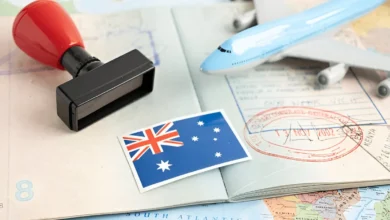
Every non-profit organization strives to engage audiences and get their attention in today’s fast-paced society. Capturing impact is one of the ultimate goals. With the use of visuals, it becomes easier to grab attention. Visual content can be effective, to say the least: it can stir emotions or communicate complex messages quickly and effectively.
For non-profits, leveraging visuals is not just a marketing strategy but an essential storytelling strategy. Text cannot compete with visuals, so when it comes to nonprofit campaigns, the power of visuals becomes the only tool that can raise awareness, build connections, and inspire action.
The Effectiveness of Attention and Engagement with Visuals
Attention spans today are single-handedly the lowest they have ever been. Social media has added to this issue as digital media is rising. Crowded with endless information is how social media usually operates.
It has become a race to stand out, and so much content is shared daily. With the help of visuals, nonprofits are being noticed and can grab attention.
Research indicates that the human brain processes images 60,000 times faster than text. A picture is worth a thousand words, and it can communicate a message far more quickly than it would take to read a paragraph. The incorporation of images, videos, infographics, and even graphics makes nonprofit campaigns more appealing to the audience.
Such campaigns are more likely to be engaged with and shared on social media, significantly enhancing the reach. For example, an image showing a community receiving aid during a disaster will evoke emotions much quicker than a written description could ever convey.
People are likely to remember information when provided with relevant visuals. In the context of a nonprofit organization, visuals are imperative to ideation. Imagery pertinent to the non-profit’s cause, such as a child gaining an education or volunteers helping a community gain access to clean water, has been shown to increase the likelihood of the audience recalling the message and the action being asked of them.
Tell A Story With Pictures
Most non-profits deal with sensitive topics like poverty, climate change, or health crises. These issues are inherently complex and form certain boundaries that are difficult to cross. Finding ways to touch supporters’ emotional needs and feelings can prove extremely difficult.
With visual storytelling, however, nonprofits can showcase their impact or mission in a very relatable and powerful manner.
Posh Pictures can help non-profits tell their stories. For instance, using before-and-after images of a conservation project or a photo series of a child’s progression through the educational programs run by non-profits can transform abstract concepts into something tangible, enabling the audience to visualize and relate to the work being done.
When people see the transformation being done through the work of a non-profit, they are likely to want to be part of this wonderful cause and feel personally and emotionally connected.
Using infographics enables the public to understand complex data very simplistically. Being presented in such a simplistic yet appealing manner ensures that people not only understand the scale but also the progress being made towards resolving certain issues.
Infographics showcasing the number of people helped by a specific initiative, funds raised, or environmental benefits of a program serve not only to feature the central point of such initiatives, but they also strengthen key messages while engaging the audience.
Quality Enhancements
Visuals, like any other stuff, should be tailored to fit a specific purpose or objective. Depending on their purpose, they may need to be of a certain quality to make the intended impact. Blurry or cropped images can make a nonprofit campaign appear unprofessional and even reduce effectiveness.
The organization must ensure that the non-profit’s digital assets have the appropriate resolution for the platform they will be used on. Image converters offered free of charge, like jpgtopnghero, can assist with enhancing visual content by altering the image file format and optimizing image dimensions to smaller sizes, which speeds up loading and improves display quality.
Having high-quality images instills trust and portrays professionalism, which helps build credibility among supporters of nonprofits.
Emotion and Empathy
Unique forms of images can elicit powerful feelings from people, making them a powerful tool. Many nonprofits need to rely heavily on the emotional aspect to motivate their donors, volunteers, or advocates to take any action toward the cause.
Text does not invoke emotions like pictures do. However, a smile from a child who received life-saving treatment or families rebuilding their homes after natural disasters tends to elicit empathy.
Visual representation can invoke emotion, which, when harnessed properly, can help nonprofits strengthen bonds with their audiences. People are more likely to give time and financial support when emotionally attached to a particular cause, and this is why most successful campaigns focus on using captivating images telling human stories.
Such photographs help supporters realize how real their impact is and motivate them to take steps and contribute to it.
Though it is very important for a non-profit to present striking images, balancing the emotional aspect becomes fundamental. People must find hope and actions to these images instead of guilt or suffocation. It is important to find balance, and when tackling issues around a sensitive topic like this, showing efforts and donations is also needed, along with the strong reality of the world.
Producing Visual Content to Enhance Public Sharing
With the advent of social media, shareability has become crucial for spreading any nonprofit’s message. The greater the share rate, the more content an organization accesses. Content based on image is more likely to be shared than content solely based on text. Studies show that posts containing images or videos get far greater engagement on Facebook, Twitter, and Instagram.
When nonprofits create shareable visuals such as images, videos, or infographics, they increase the probability of their message reaching a larger audience. This increase in reach will improve exposure, translating to greater brand recognition, increased donations, and even non-profit volunteers.
Not to forget, supporters will become more familiar with the organization; thus, branded images, custom graphics, and videos help make the organization more recognizable. Consistency and creativity will give nonprofits an identity and curb their visuals. A recognized cohesive style where colors, fonts, and imagery are uniform across all campaigns aids in fortifying brand presence.
Access and Inclusivity Enhancements
Visuals can enhance accessibility and inclusivity gaps. Several Nonprofits focus on causes that cater to disabled and marginalized groups. By using clear and accessible visuals, nonprofit organizations can ensure that their campaigns are inclusive to people with diverse abilities as they broaden their reach.
High-contrast images or adding descriptive alt texts to images make the content accessible to portions of the visually impaired population. Videos can be made more inclusive for the hearing-impaired through subtitles or sign language interpretation. By doing so, nonprofits work towards inclusivity, which makes it easier to win the trust of many audiences and engage them with their work.
Conclusion
Defending a cause and collecting funds for a nonprofit organization is a competitive sector where visuals become an asset that captures attention, delivers messages, and compels audiences toward taking action. Enabling compelling storytelling that evokes emotion, infographics, powerful images, and videos assists nonprofits in creating lasting connections. Nonprofits can amplify campaigns, inspire support, and make a real-world impact by leveraging the power of visuals.













